Images were acquired at dose levels representing low-dose Ca score, low-dose CTA, CTA standard, standard abdomen and high-resolution thorax protocols, and images have been reconstructed for AiCE levels 1, 2, 3 (Mild, Standard, Strong) and PIQE levels 1, 2, 3 (Mild, Standard, Strong).
Differences in Hounsfield Units (HUs) between AiCE and PIQE were 4 HUs or less for all inserts and scan and reconstruction settings.
For all dose levels the SR-DLR (i.e. PIQE) simultaneously improves MTF resolution (see figs. 2 and 4) and noise (see figs. 8-10).

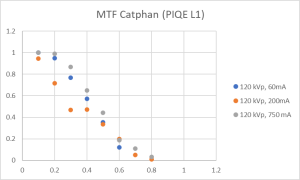
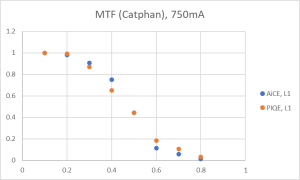
This combined effect is even more noticeable visually (as opposed to measured), see figs. 5-7.
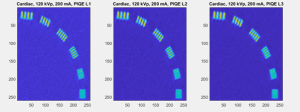


Noticably, PIQE results in lower noise levels (expressed as standard deviation), even though the pixels are twice as small (0.22 mm vs 0.43 mm for PIQE and AiCE, resp.).
For all dose levels, for both AiCE and PIQE, the Mild setting results in the highest noise level, and Strong in the lowest noise level (see fig. 8), even though resolution (MTF) is hardly affected by increasing the strength of the AI-reconstruction (see figs. 2 and 5).
Judging from the MTF-values (fig. 2 and 3) overall MTF seems well maintained for all dose levels and all reconstructions. However, looking at the actual images (figs. 5-7), it can be seen that the 7, 8 linepairs/cm can no longer be distinguished at lower dose levels. The 200 mA images have the highest resolution, possibly because this is the highest mA with small focal spot, but these are also the only images in which streaking artefacts can be seen (figs. 6 and 7).
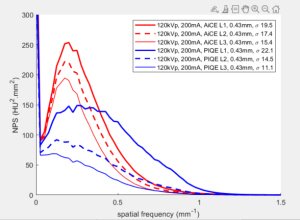
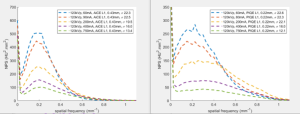
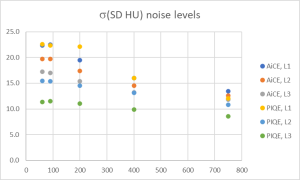
Furthermore, noise (standard deviation) of the super-resolution reconstructions suffers less from decreasing dose levels (fig. 10), while MTF is relatively well maintained, which is very promising with regard to optimization of dose levels.